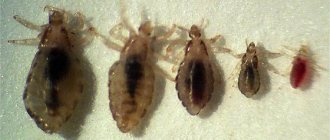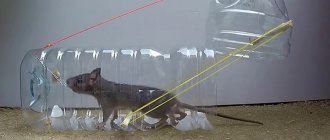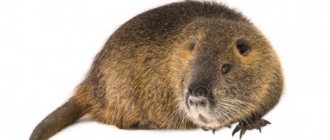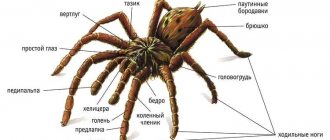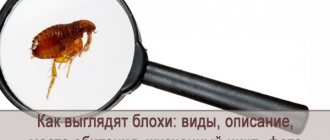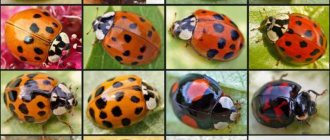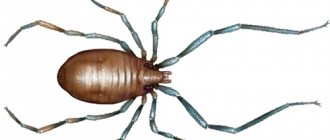Description of the rodent
— Advertising —
The body length of the rat is from 8 to 30 cm, the length of the tail is either the same as the body length or exceeds it, weight depending on the species is from 40 to 400 g. The body color is predominantly dark gray or gray-brown, yellow is also found , red and orange tones. The toes are very flexible.
Rat as a pet
Gray rats are easily tamed and bred as pets and test animals. Decorative rats are friendly towards people, omnivorous and clean, so caring for a pet rodent does not cause any special problems. It is important for all potential owners of rats to take into account that they are social animals and keeping rats alone will cause psychological stress in the animal.
Rat nutritional features
Rats are omnivores, but each species has its own preferences. Some people eat more plant foods, seeds, vegetables, and fruits. Others prefer insects, mollusks, and small invertebrates. For example, the diet of a gray rat always contains animal protein, fish and amphibians, mollusks, small rodents and insectivores. From plant foods, rats feed on seeds, grains, and succulent parts of plants. Near a person they find all available food products, waste, livestock and poultry feed. There are practically no stocks.
A rat consumes 20-25 g of food per day, and 7-10 kg of food per year. Rats endure hunger very hard; without food they die on the 3-4th day. They die even faster in the absence of water. A rat usually drinks 30-35 ml of water per day, 5-10 ml if wet food is available.
What to do if there are rats
Rats in the house or on the property are pests. They spoil human supplies and harm plantings, bulbs and young trees. They scare livestock and even easily steal eggs.
It is also worth noting that rats are carriers of many diseases in humans and animals. You can read more details at the link.
There are a number of steps that will help avoid the appearance of rats and drive them out of the area:
- Keep storage areas for vegetables and cereals and livestock areas clean.
- Remove accumulations of debris from areas, thickets and reins.
- Get pets that repel rats with their smell: cats and dogs.
- Check for the presence of rats, mice and moles.
- If the area is in a risk zone, install repellers in advance.
Using the links to articles on the portal, you can get acquainted with all the possibilities for exterminating rats on the site and for prevention.
How to get rid of rats in a barn
Rats in the barn scare the animals and steal eggs. You need to get rid of them quickly, but at the same time take care of the safety of other residents.
How to get rid of rats on your property
Rats on the site spoil crops, bulbs, roots and gnaw the bark or shoots of young trees. They must be removed quickly, without delay.
Common types of rat
Gray rat, or pasyuk (Rattus norvegicus)
Body length without tail is 17-25 cm, weight 140-390 g. The tail is shorter than the body, up to 19.5 cm in length. The muzzle is blunt and wide, the ears are small. The color is gray with red in adults. The hair on the abdomen is white with dark bases. Sometimes there are black individuals.
The species is distributed on all continents except Antarctica. Eastern Asia is considered the homeland of the gray rat, from where they passively settled mainly on sea vessels.
Tan Rat (Rattus adustus)
Endemic to the island of Engano, which is located 100 km southwest of Sumatra (Indonesia). Outwardly it resembles a gray rat, but is more red in color.
Kinabuli rat (Rattus baluensis)
The species is found in Malaysia in northern Borneo at altitudes of 1524-3810 m above sea level. Lives in mountain and moss forests. Outwardly similar to a gray rat.
Black rat (Rattus rattus)
Smaller in size than the gray rat. Body length is 15-22 cm, weight 132-300 g. The tail is covered with dense hairs, longer than the body. The muzzle is narrow, the ears are large and round in shape. There are two color options:
- dark or black-brown above with a greenish tint of guard hairs; light sides; ashy or dirty gray tummy;
- on top the color is like that of a gray rat, but lighter and yellower, the tummy is whitish or yellowish.
Southern forms are usually larger and lighter in color than northern ones.
The species is cosmopolitan, distributed in Europe, Asia, Africa, America, and Australia.
Australian swamp rat (Rattus lutreolus)
Body length 12-20 cm, tail length 56-150 mm, weight about 115 g. The coat is gray-brown or dark gray on top, the belly is usually lighter, from brown to cream color. The hairs have golden tips. The ears are small and invisible in the fur. The tail is scaly with sparse hairs.
The species is found southeast of Fraser Island and south to Kangaroo Island, Tasmania, Bass Strait Islands, Queensland, up to 1600 m above sea level.
Long-haired rat (Rattus villosissimus)
Endemic to central and northern Australia, where it lives in arid or desert areas. Outwardly similar to a black rat.
Small rat (Rattus exulans)
The body is short, the muzzle is pointed, the ears are large, the color is brown. Body length is from 11.5 to 15 cm (without tail), the tail is thin, with “rings” on the surface. The length of the tail is equal to the length of the body. Weight is 40-80 g.
This is the third most common species of rat in the world. Indonesia is recognized as its homeland, from where the small rat was distributed throughout Southeast Asia and Oceania. Lives in steppes, fields and forests. Kept as a pet.
Rats: varieties, lifestyle, habitats in nature and cities.
Rats. Facts, myths, legends... Do you know which animal has claimed the most human lives in the history of mankind? Do you think these are poisonous scorpions? Predatory wolves, creepy crocodiles or rattlesnakes? You are wrong. It's rats! Ordinary gray and black rats... The same black rats that brought the plague with them to Europe in the 14th century, the epidemic of which killed a third of the population of all of Europe. Every year, rodents eat 1/5 of the world's grain harvest. The appetites of these creatures can be judged by the volume of supplies found in burrows: gray rats (pasyuki) drag several buckets of potatoes, carrots, nuts from cellars into their shelters, steal prepared dumplings, cheeses, sausages, steal eggs directly from under the hens, accumulating up to 3 dozen pieces in their closets. Fighting rats is difficult. Traps, mousetraps and other human tricks do not affect them as they would like. If one member of the group dies in a mousetrap, the rats inform each other about the danger, and no one will fall for this trick a second time. The same will happen with the poison placed: the rats will remember why their relative died, and will no longer touch the bait. Rats have developed resistance to many deadly poisons. Rats cause great harm, not only by eating, contaminating and spoiling a variety of food products, but also these creatures destroy various materials and structures, including the insulation of electrical cables, various appliances, etc. Their teeth grow throughout their lives, The upper incisors grow at a rate of 1 cm per month. Therefore, in order to avoid a terrible death from teeth growing into the jaws, rats gnaw everything that gets in their way. There are known cases of accidents at power plants caused by rats. A rat can even destroy metals and alloys with low hardness, not exceeding the hardness of the enamel of the incisors, such as copper, lead, tin, etc. It is believed that there are almost twice as many rats on Earth as people. The average lifespan of rats is quite short: from one to two and a half years, but these animals are unusually fertile. A female gray rat can give birth to her first offspring at the age of 4-5 months, and she will give birth to 2-3 litters per year, up to 17 pups each. Biologists have calculated that the offspring of just one pair of rats in a year can reach 15 thousand individuals. Of course, a significant part of them die, otherwise rats would have filled the entire Earth in a very short time. On average, a rat weighs 200-250 grams, but the largest of them grow up to half a kilogram. These are active animals with extraordinary physical characteristics. If necessary, the rat can reach speeds of up to 10 km/h, overcoming barriers up to 80 cm high while moving (they can jump up to 1 meter from a standstill). Every day a rat runs from 8 to 17 km. They swim well (can stay in the water for up to 12 hours) and dive, staying in the water column for a long time and even catching prey there. Rats have poor vision. Rats mostly see everything in gray. The sense of smell is well developed. They hear sounds with a frequency of up to 50 kHz (humans - up to 20 kHz). They live and breed well both in refrigerators at temperatures of minus 18-20 degrees, and behind the casing of steam boilers, where the heat is constantly above 50 degrees. Withstand high levels of radiation. When falling from the fifth floor, they do not receive serious damage. Through ventilation pipes, rats can climb into apartments on the highest floors. So, rats are unique animals with developed intelligence. Some “scientists” even came to the conclusion that rats are nothing more than a civilization accompanying people, in which everything is like people: hierarchy, language, relationships, etc. Western “luminaries of science” claim that rats have a sense of humor and they can really laugh. You have already realized that it is not easy to fight these tenacious, “unique”, well-organized, intelligent animals. But it’s still possible, the weak point of rats is hunger! A rat won't last even two days without water. She needs 30-35 ml of water per day. But without food, rats do not survive more than three to four days. Habits and habitats . In central Russia there are mainly two types of rats: black and gray.
Black rat, or roofing, attic, ship rat. The coloring of “black” rats is very diverse - from pure black, black-brown with graying to reddish, red-gray, typically pasyukov coloring and ashy. Young animals are more uniformly colored than adults. Black rats are smaller in size than gray ones, but large old animals, especially from pigsties, can reach 350-380 g. This heat-loving species is tropical in origin. It climbs very well, in nature it often leads a semi-arboreal lifestyle, it swims reluctantly and rarely. Active mainly at night. Black rats live in groups that include adults of both sexes and young animals. Hierarchical relationships are established within the group with dominance of one male. Two or three females usually dominate the rest of the group with the exception of the eldest male. Black rats are less aggressive than pasyuki; females are more aggressive than males. In case of danger, they try to hide from their pursuer and only, when caught, use their teeth. Over the past 100 years, the black rat's habitat has been dramatically reduced and fragmented. It is believed that the black rat is being replaced by the more prolific and hardy beaver.
So, the most common rat in our country is the gray rat; it is also called the barn rat, the red rat, or the pasyuk. This is the largest and most vicious of the rats living among us. In places where they live together, where they compete for food and shelter, the gray rat always wins and displaces the black one. The gray rat is strong, cunning, unusually daring and dexterous, lives in cities, villages, residential buildings (usually in basements), warehouses, fields, gardeners' gardens, and even lives in forests. You can see it at a railway station, as well as at a pier; a favorable environment for its habitat is also a garbage dump and the surrounding area; they like to live near food waste dumps, that is, gray rats live wherever there is food. In addition to plants, rats happily eat meat products and feed on garbage. They also eat the corpses of animals and the bodies of dead people left unattended. And one of the reasons for sitting near the deceased (so that he is not left alone) is rooted precisely in this circumstance. This is explained by the fact that rats are very attracted to the fresh smell of corpses. Rats also attack completely living creatures: young chickens, geese, piglets, puppies, ducks, in a word, all small animals that cannot defend themselves, including helpless little human cubs. In cities, rats' habitats are closely related to humans. They are usually found in basements and on the first floors of buildings. If there are large numbers of rats, they can also penetrate the upper floors, right up to the attic. In the warm season, animals often settle in earthen burrows in open areas: in gardens, parks, lawns and other places. With the onset of cold weather, rats return to buildings. However, the pasyuk is not distributed everywhere, but only in those areas of the terrain that meet its main requirement: the presence of sufficient water and food. If there is a lack of food, the rat can move up to 3 km from the nest in search of it. To gain entry into the premises, the rat uses any destruction around technical communications inputs, faulty windows, doors and hatches. Indoors, rats move along walls or shelters. Sometimes they can travel through sewer pipes, emerging from the toilet and returning through it back to the basement. Rats are mainly animals with a nocturnal and crepuscular type of activity. During daylight hours, they lead a secretive lifestyle, staying in their shelters or other shelters. The life of a gray rat is connected with its home, in which it not only finds protection from predators and adverse influences of the external environment, but it also serves it for feeding its offspring. Basically, rats prefer to dig holes in the ground at a depth of 50-60 cm, and the total length of one rat hole can reach 2-5 meters. Sometimes rats live in nests located directly among bags of various products, in various voids, under awnings, in construction waste, etc. In low-rise buildings, or in multi-storey buildings without garbage collection chambers, rats can live in basements, burrows near container sites or at a short distance from them. Favorable conditions for the existence of rats in a residential building are created by its structural elements, in which heat and sound insulating layers made of polystyrene foam and other materials that are easily chewed by rats have now begun to be used. Rats willingly inhabit the space behind suspended ceilings, technical corridors, and other places that are difficult for humans to reach. In houses equipped with a garbage disposal system, gray rats live in the garbage chambers and in the immediate vicinity of them in the structural elements of the building and in the burrows that they make in the ground of the basements. When the population is high, rats live near all garbage chutes, and when the population is low, they live only near those where the conditions are especially favorable for them. Rats can live in the same buildings without moving into neighboring ones. Relocation can only be associated with the destruction of a building or its major repairs. At the same time, they scatter not far away (300-400 m) and hide in neighboring (often unfinished) buildings. But if necessary, they can move several kilometers, which contributes to their wide distribution. As a rule, pasyuki live in small families, groups or clans of 5-15 individuals. Each group occupies its own area of territory (approximately 40-50 sq. m), within which the animals find all the necessary conditions for existence: food, water, shelter. The boundaries of the rat's area are marked with urine. On it the rats create travel paths, underground passages, and shelters. The number of rats in residential buildings, just like in other buildings, undergoes regular seasonal changes, increasing in the spring due to the mass emergence of young animals and in the fall - due to the arrival of young animals from spring litters, as well as individuals of other groups. In the wild , the gray rat lives near water, preferring gently sloping banks with soft soil, where it can dig a long (up to 5 meters) hole. When this shelter is flooded during a flood, the rats move into hollows, and if there are none, they build temporary nests in nearby trees. They are not at all afraid of water, they swim and dive perfectly (the animals have small swimming membranes on their hind legs), and they get food in the water - mollusks, swimming beetles, frogs, and, on occasion, fish. In general, the rat attacks any prey, from insects to pigeons and water voles, which are not inferior in size to the pigeon (it is not for nothing that the vole is better known as the “water rat”). But the latter is much inferior to him in intelligence and dexterity. In natural conditions, pasyuki usually live in large groups, sometimes in colonies, jealously defending their ancestral territory from strangers. At the same time, family members distinguish their many brothers not “by portrait”. And the point here is not a bad memory - when solving a problem of passing a labyrinth, a Pasyuk can remember a more complex route in his head than a person. The rat identifies “friends” and “strangers” by smell: all members of the colony are blood relatives who constantly maintain physical contact with each other, their smell has a common component. Everything else doesn’t matter: if you keep a pasyuk on bedding left over from someone else’s group, and then release it to its relatives, they will tear it into pieces, sensing a foreign smell. Needless to say, the same fate awaits the real stranger. Violent clashes within the group are also not uncommon, although there are almost no deaths. By the way, their fights are stimulated by nature itself: male pasyuks have an interesting physiological mechanism - after each successful fight, the winning rat grows a little and gains weight (pasyuks, in principle, are capable of growing throughout their lives). And since the outcome of the fight depends primarily on the size ratio of the fighters, the most successful fighters grow until those who want to measure their strength are transferred. Such champions become dominant and the fathers of most rat pups in the group. In the Urals and central Russia, similar colonies exist in the mode of dacha settlements - they are inhabited only in the warm part of the year; for the winter, rats go to human habitation. They are afraid not of the cold, but of the inability to feed themselves: where there is enough food, the pasyuk calmly endures the most severe frosts. At meat processing plants, rats were repeatedly found in freezers: they lived inside frozen carcasses, eating only meat at a temperature of -18 degrees! Methods of fighting rats.
So, let's summarize: The Rat is not picky about food, has animal sense and intelligence, reproduces well, is able to climb trees, and sometimes even walls, while it can swim and dive well. The rat's main weapon is its teeth, which can even chew through metal. Rats can survive anywhere. They live throughout the entire earth - from the tundra to the jungle (except for Antarctica and uninhabited areas of the Arctic), and due to their unpretentiousness, they adapt to any conditions. This is why fighting rats is very difficult. But thank God, after all, the king of nature on Earth is man, and over the long history of “communication” with this “cute city animal,” people have come up with quite a few effective ways to combat rodents. Of course, it will most likely not be possible to completely exterminate rats and mice, but it is quite possible to reduce the number of rodents to an acceptable level. Here are some of them: 1. Biological method - catching rats with the help of cats and dogs. In nature, dogs are the natural enemies of rats, and many even believe that a large number of stray dogs is a deterrent to the spread of rats, supposedly the presence of dogs negatively affects the rat population, sensing their presence rodents slow down the reproduction of offspring. 2. Physical method - rat traps, traps, traps. 3. Chemical method - poisoned baits, pollination and aeration. 4. Ultrasonic method is an effective and safe way to control rodents: it repels rodents without killing them. 5. Well, perhaps the most important thing is prevention: - maintain order and cleanliness, - eliminate access to food and water, - get a cat or install an ultrasonic rodent repeller.
Rat behavior
Rats lead a terrestrial or semi-arboreal lifestyle. In order to hide, they use burrows, which they dig themselves or by finding abandoned empty burrows of other animals. They live either alone or in family or territorial groups. There are up to several hundred or thousands of individuals in colonies. There is a hierarchy within the group. The colony occupies an area of up to 2000 m2, and marks it with scent marks.
Rats are active at night and at dusk. They often settle next to a person and easily adapt to his activity.
Danger to people
Rats bites and scratches can cause illness and fever in humans. Rat urine is responsible for the spread of leptospirosis, which can cause liver and kidney damage. Complications include kidney and liver failure, as well as cardiovascular problems.
Lymphocytic choriomeningitis (LCMV), a viral infectious disease, is transmitted through the saliva and urine of rats. Some people experience long-term effects of lymphocytic choriomeningitis, while others experience only temporary discomfort.
One of the deadliest rat-borne diseases in history is the bubonic plague, also called the “black plague.” Transfer occurs when a person is bitten by fleas from rats. Fleas carried by rats are believed to be responsible for this plague in the Middle Ages, which killed millions of people. From bubonic plague to typhus and hantavirus, rat infestation can be hazardous to human health.
Rats are also a potential source of allergens. Their feces, dandruff and lost hair can cause sneezing and other allergic reactions.
Diseases transmitted by rats can be divided into two categories: diseases transmitted directly through contact with infected rat feces, urine, or bites, and diseases transmitted indirectly to humans through intermediate arthropod vectors such as fleas, ticks, or mites. Although all of the diseases or medical conditions listed below are associated with rats, most of them are not commonly encountered today.
Diseases directly transmitted by rats
- Hantavirus pulmonary syndrome: This is a viral disease transmitted by some rats. This disease is spread in one of three ways: by inhaling dust contaminated with rat urine or droppings, by direct contact with rat feces or urine, and, infrequently, by rat bites.
- Leptospirosis: This is a bacterial disease that can be spread through contact with contaminated water through swimming or through contaminated drinking water. People may be at increased risk of contracting leptospirosis if they work outdoors or with animals.
- Rat bite fever: This disease can be transmitted through a bite, scratch, or contact with a dead rat.
- Salmonellosis: Consuming food or water contaminated with bacteria from rat feces can cause this disease.
Diseases transmitted indirectly from rats
- Plague: This disease is carried by rats and transmitted by fleas through blood ingestion. Domestic rats are the most common reservoir of plague.
- Colorado tick fever: This is a viral disease transmitted by the bite of a tick that has ingested the blood of a brushwood tick.
- Cutaneous leishmaniasis: This disease is a parasite that is transmitted to humans by the bite of an infected sand fly that has eaten a wild tree rat.
Hantavirus
Some species of rats, such as cotton rats, are known carriers of hantavirus. Norwegians are not able to transmit this disease. Victims may be weakened and have difficulty breathing. Hantavirus is transmitted to people when they inhale airborne particles from the droppings, urine or carcasses of rodents that have been killed.
The first symptoms of the virus can be mistaken for the flu. Patients then suffer from difficulty breathing, which can prove fatal if not treated immediately and effectively.
To avoid hantavirus, you must remove all mouse droppings, nesting materials, and dead rodents from your home. Before cleaning, thoroughly spray suspicious areas with disinfectant to ensure nothing gets into the air. Wear gloves when handling rodent carcasses or droppings, and use a respirator with proper cartridges. After cleaning, the building should be ventilated. Not all rodents carry hantavirus. Cotton rat mice are the most common vectors. However, everyone should exercise caution when dealing with rodents or rodent infestations and contact a pest control professional.
Rat breeding
They breed throughout the year, except in northern populations. The gray rat has 2-22 cubs in one litter, on average 8-9, in Malayan species from 3 to 6, in Australian species from 3 to 14
Under natural conditions, rats breed in warm weather, 2-3 times a year, and in heated rooms - all year round, breeding up to 8 offspring. The breeding cycle has a spring and autumn peak.
Pregnancy lasts 22-24 days. Babies weigh 4-6 g and are born naked, blind, with closed ear canals. Stillborn and weak rat pups are eaten by females. Males do not take part in raising offspring. The eyes of rat pups open 2 weeks after birth. At the age of 3-4 weeks they become independent. Females reach sexual maturity at 3-4 months.
The lifespan of rats in nature is from 1.5 to 3 years.
What is the difference between a mouse and a rat?
Although these two animals belong to the same species, they have a lot of differences. But sometimes it can be very difficult to distinguish a rat from a mouse, so let’s start with the differences between these rodents:
- The first and most important difference is the number of chromosomes. Mice have 20 of them, and rats have 22, which makes it impossible to cross these two species.
- Body length. The carcass of rats can reach 40 cm in length, while mice rarely grow more than 15 cm in length .
- Rodent weight. Rats can weigh up to 700 grams, and mice only reach 50 grams;
- Number of nipples. Rats have 12 of them, mice have 10.
- Activity. Mice sleep for short periods of time several times during the day. Rats sleep only once a day if no one disturbs them during sleep.
- Nutritional features. Both rats and mice are omnivorous rodents, but the diet of the former contains more protein foods. Mice prefer plant foods, and resort to eating beetles, frogs and worms much less often.
Now let's talk about what these two types of rodents have in common:
- long tails covered with horny scales and sparse hairs, a long elongated muzzle, rounded ears and eyes;
- both species can be domesticated;
- active at night;
- agile and dexterous;
- often live close to a human home . Far from humans, they most often live in countries with warm climates.
Interesting facts about the rodent:
- Rats cause economic damage as they eat and spoil food and non-food products, damage electrical networks, and cause damage to agriculture. In addition, they are a natural reservoir for many zoonotic and anthropozoonotic infections (plague, tularemia, rabies, typhus, toxoplasmosis, leptospirosis, rickettsiosis). Therefore, many methods have been developed for their destruction - deratization. But rats can adapt to and recognize poisons.
- In the United States, rats bite about 14,000 people every year.
- Since the 19th century, specially bred rats have been kept as pets. They are also bred as “live food” for home terrariums and zoos.
- Rats are the main experimental system in biological and medical experiments. Special laboratory rats were bred for this purpose. They are distinguished by their fast metabolism, unpretentiousness and peaceful nature.
- Rats are considered very intelligent animals; along with humans, they have abstract thinking. In addition, they respond to tickling and produce ultrasonic laughter-like sounds.
- In China, the rat is a symbol of prosperity and the first animal to open the cycle of the eastern horoscope. In Islam, the rat is the embodiment of sensuality, and Hinduism represents the rat as a former demon.
What damage do rats cause?
Rats consume and contaminate food and animal feed. They also damage containers and packaging materials in which food and feed are stored. All types of rats cause problems by chewing on electrical wires and wood structures (doors, ledges, corners and wall material) and tearing through insulation in walls and ceilings for nesting.
Norway rats can undermine building foundations and slabs. They can also chew through all types of materials, including soft metals such as copper and lead, as well as plastic and wood. If rats live in the attic of a residential building, they can cause significant damage through their gnawing and nest building. They also damage garden crops and ornamental plantings.

